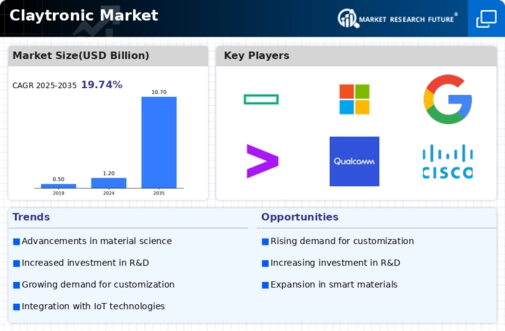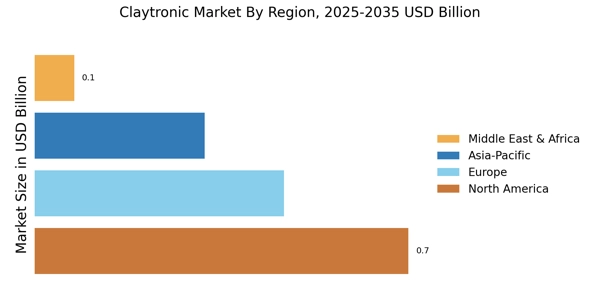Advancements in Material Science
The Claytronic Market is experiencing a surge in advancements in material science, which is pivotal for the development of claytronic systems. Innovations in nanomaterials and smart polymers are enabling the creation of more responsive and adaptable claytronic devices. These materials enhance the functionality and efficiency of claytronic applications, making them more appealing to various sectors. As a result, the market is projected to grow at a compound annual growth rate of approximately 25% over the next five years. This growth is driven by the increasing demand for interactive and immersive technologies, which rely heavily on the capabilities of claytronic systems. The integration of these advanced materials into the Claytronic Market is likely to lead to new applications, further expanding the market's potential.
Increased Focus on Education and Training
The Claytronic Market is benefiting from an increased focus on education and training, particularly in the context of remote learning and skill development. Claytronic Market systems offer unique advantages in creating interactive and engaging learning environments, which are essential for effective education. The global e-learning market is anticipated to reach USD 375 billion by 2026, with claytronic applications likely to play a vital role in this transformation. By providing tactile and immersive experiences, claytronic technology can enhance the learning process, making it more effective and enjoyable. This trend is expected to drive further investment in the Claytronic Market, as educational institutions and training organizations seek innovative solutions to improve learning outcomes.
Integration with Internet of Things (IoT)
The integration of claytronic systems with the Internet of Things (IoT) is emerging as a significant driver for the Claytronic Market. As IoT devices proliferate, the need for more sophisticated and interactive interfaces becomes apparent. Claytronic Market systems can provide a tangible interface for users to interact with IoT devices, enhancing user experience and engagement. This integration is expected to create new opportunities for the Claytronic Market, as businesses seek to leverage the capabilities of claytronic technology to improve connectivity and functionality. The IoT market is projected to grow to USD 1 trillion by 2026, indicating a substantial opportunity for claytronic applications to thrive within this expanding ecosystem.
Rising Demand for Interactive Technologies
The Claytronic Market is witnessing a rising demand for interactive technologies, which is significantly influencing market dynamics. As consumers increasingly seek immersive experiences in entertainment, education, and healthcare, claytronic systems are positioned to meet these needs. The market for interactive technologies is expected to reach USD 300 billion by 2026, with claytronic applications playing a crucial role in this expansion. This demand is driven by advancements in augmented reality and virtual reality, where claytronic systems can provide tactile feedback and realistic interactions. Consequently, the Claytronic Market is likely to see a surge in investment and innovation, as companies strive to develop cutting-edge solutions that cater to this growing consumer appetite.
Growing Interest in Robotics and Automation
The growing interest in robotics and automation is significantly impacting the Claytronic Market. As industries increasingly adopt automation technologies, the demand for advanced human-robot interaction systems rises. Claytronic Market systems can facilitate more intuitive and natural interactions between humans and robots, enhancing collaboration and productivity. The robotics market is projected to exceed USD 200 billion by 2025, indicating a substantial opportunity for claytronic applications to integrate into various robotic systems. This trend suggests that the Claytronic Market will likely see increased collaboration with robotics firms, leading to innovative solutions that enhance operational efficiency and user experience.


















Leave a Comment